
The surroundings
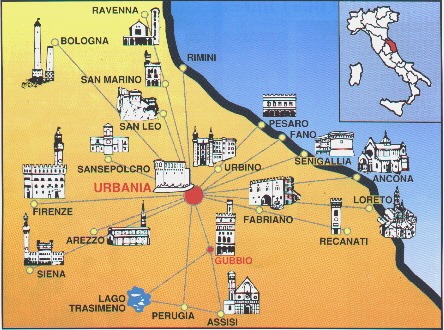
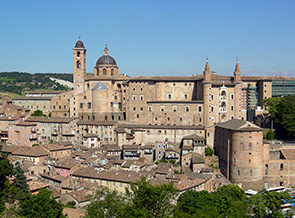
URBINO 15 KM
The city of Urbino, situated in a panoramic position, leaning on two hills, between magnificent palaces, steep streets and interesting historical and artistic treasures, is famous all over the world. A part of the Duchy of Montefeltro dynasty experienced its heyday in the field of philanthropy and arts with Federico II da Montefeltro (1422-82). At his court resided and worked great artists, writers, scientists and personalities of the time, such as Piero della Francesca, Leon Battista Alberti, Francesco di Giorgio Martini, and Luciano Laurana, leaving important traces of their stay in the magnificent Palazzo Ducale, especially, those of Federico and his wife Battista Sforza. In 1483 Urbino became the birthplace of Raffaello, one of the most famous painters and architects of the Italian Renaissance.
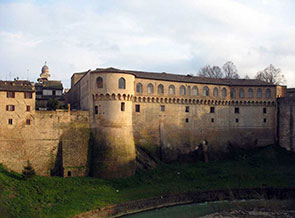
URBANIA 5 KM
Urbania, the ancient Casteldurante of the Duchy of Urbino, is situated in the green valley of the river Metauro. The dukes of Montefeltro-Della Rovere considered Urbania as the “place of delights” and they built a special road that allowed reaching Urbania from Urbino in only three hours in carriage. Francesco Maria Della Rovere III had lived in Urbania and died in 1637, thus the duchy ended at that time. Then Urbania was taken over by the Papal States and it took its current name in honor of Pope Urbano VIII. He was known throughout Europe thanks to the art of ceramics, particularly flourishing throughout the ‘500. It is highly recommended to visit the Ducal Palace, the Civic Museum, the Cathedral, the Church of the Dead, the Diocesan Museum, and the Museum of the Ducal Park.
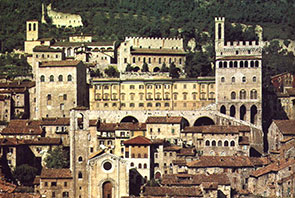
GUBBIO 55 KM
Powerful and rich, at the end of the fourteenth century Gubbio became a fief of Montefeltro of Urbino. After a period of decline in 1624, it became together with the Duchy of Urbino a part of the Papal States. The city is located on large horizontal stripes on the slopes of Mount Ingino. It has one of the best preserved medieval city centers in the world. In the lower level there are some remains of the Roman city, the Roman Theater dating back to the first century A.D. and beautiful mosaics.
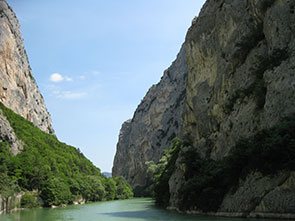
FURLO GORGE 25 KM
In a pristine natural environment there is the famous Furlo Gorge, a narrow canyon carved by the erosive action of the river Candigliano that creeps among the steep slopes of the mountains Pietralata and Paganuccio. The gorge has been already transited in Roman times (it was a stretch of the ancient Via Flaminia) and in 76 AD the “Forulus” was dug here by the Emperor Vespasian. It is about a gallery that has the same name and is still used until nowadays. The area is protected as a nature reserve and is of great geological and natural interest.
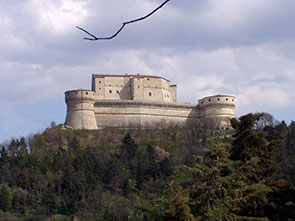
SAN LEO 45 KM
San Leo rises in a magnificent position on the rocks. It is a place which had been considered sacred by the ancients and it denotes the beginning of the reign of the reign of the Dukes of Montefeltro. It is also the place where St. Francesco received as a gift the Monte della Verna in 1231. The political and military power of San Leo ceased in 1631 when the ducal family disappeared from Urbino and the area was handed over to the Papal States. The fortress became a prison (famous because it imprisoned Cagliostro until his death in 1795) and was closed at the beginning of ‘900.
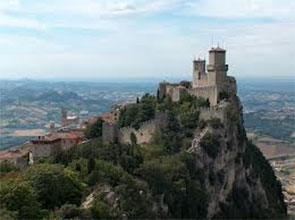
SAN MARINO 65 KM
San Marino, the smallest and oldest republic in the world, lying on the western slopes of Mount Titano, is dominated by the Rocca, the Basilica and many other buildings rebuilt in ‘900. The center retains a pleasant medieval flavor characterized by stone houses, roof gardens, small gardens, sometimes steep streets with stairs and some irregular squares. In many ways you can enjoy a splendid view. The old town is surrounded by the walls of the ‘500 built on previous defensive walls.
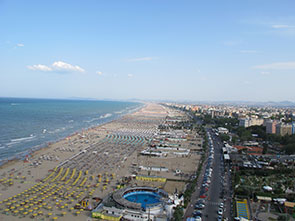
RIMINI 65 KM
The Riviera of Romagna extends from Cattolica to Milano Marittima and it crosses Riccione, Rimini and Cesenatico. It has two completely different facets: the first one is for summer vacations with hotels, guesthouses for families and nightclubs wich is a paradise particularly for young people, and another quiet winter facet with monumental center of Rimini, wich retains many traces of the Malatesta and medieval past. In the summer, along the coast, everything is organized by day and night for endless possibilities for entertainment, sports and culture. Indeed you can enjoy amusement parks, theaters, fairs, markets, shopping centers, cocktails, and concerts of classical music until sunrise at the beach.
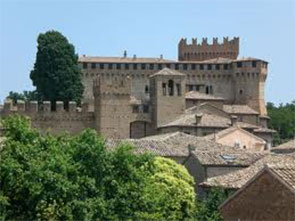
GRADARA 49 KM
Just three miles from the sea of Gabicce, in a splendid panoramic position, there stands the medieval town of Gradara, all surrounded by walls, reinforced by Towers and culminating in the famous Malatesta Fortress. The legend says that here the drama of Paolo and Francesca took place; the lovers have been celebrated by Dante in Canto V dell’Inferno but put to death by Francesca’s husband, Gianciotto Malatesta.
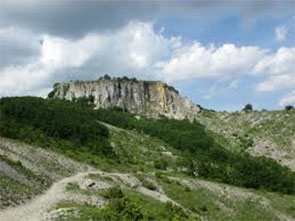
SASSO SIMONE 35 KM
On the Apennines there is the park of Sasso Simone and Simoncello, where pines, oaks and century-old trees melodiously climb up to the ruins of medieval fortifications. The Park Authority provides guidance and advice to let you experience this pristine corner. On the rocky walls of several headlands it’s possible to practice climbing.
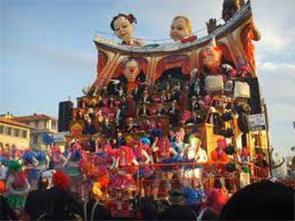
FANO and ADRIATIC SEA 50 KM
Remembered that Fanum Fortunae in 49 BC, during the occupation of Caesar, became a colony. Fano‘s Roman walls are perfectly appreciable Augustan. They partly encircle the city and the intact arch of Augustus. Already an important port along the Via Flaminia, Fano is today a charming seaside resort. Important archaeological excavations of recent years are bringing to light other important remains of Roman times. In Fano you can find the oldest carnival of Italy distinguished by its floats, masquerades, music, and tons and tons of candy for a unique and unforgettable experience.
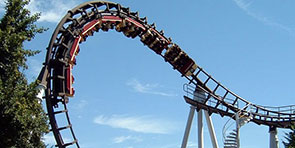
PARCHI RIVIERA ROMAGNOLA 55 KM
The amusement parks of the Adriatic coast are in the territory of Ravenna, Rimini, Riccione and Cattolica, known and celebrated for entertainment and hospitality. The facilities, located in a short distance between them, provide the visitor with a unique series of emotions: from a visit to the beautiful pools of the Aquario di Cattolica to a dip in the wonderful slides of Aquafan. The amusement parks in Rimini offer you the magical parks of Fiabilandia and Mirabilandia, in addition to the wonderful reproductions of Italia in Miniatura. Finally, it is highly recommended to visit the Oltremare, the most exciting tribute to our sea and our planet.
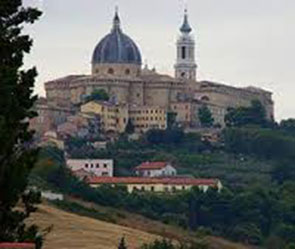
LORETO 125 KM
Loreto is one of the most important places of Marian devotion. It stands on a hill in a panoramic position. Every year it is a place of pilgrimage for thousands of visitors and devotees present for the famous pilgrimage Church of Santa Casa. The majestic and impressive Piazza della Madonna is dominated by the facade of the Sanctuary.
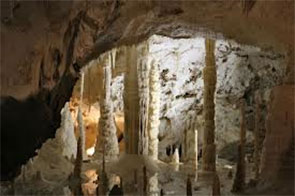
GROTTE DI FRASASSI 60 KM
The spectacular grotte di Frasassi are located about fifteen kilometers far away from Fabriano. They are situated inside the gorge of the same name, on an easy and accessible way stretching for about 1600m: it offers an extraordinary and exciting tour in the bowels of the earth, among stalactites and stalagmites, impressive caves and natural cavities. According to experts, it is one of the most important speleological areas of Europe. The walls are covered with crystalline concretions of exceptional transparency and variety of shapes and colors, which must be an unreal landscape that never ceases to amaze the viewer. A place that is constantly stimulated by new scenarios and quite impressive rooms: the abyss of Ancona is 240m high and 180m long.
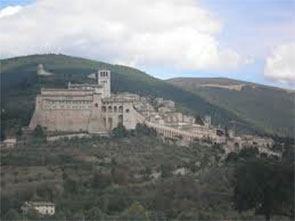
ASSISI 100 KM
The Basilica of Assisi is located at 10 km from Perugia.
Obligatory destination for international tourism, Assisi is located within a natural environment of a great environmental value and permeated by an intense spiritual atmosphere linked to Franciscan spirituality.
The area has such a rich artistic and cultural heritage through which the seraphic city, dominated by the Basilica of St. Francesco, the center of the religious world, was declared a World Heritage Site by UNESCO.
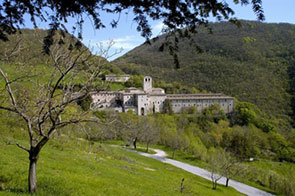
HERMITAGE OF FONTE AVELLANA 40 KM
The ancient Eremo di Fonte Avellana is a focus of faith and history. It situated on the slopes of Catria and is the birthplace of to the poet Dante. Among the goals of secular devotion reminds the Church of Madonna del Pelingo, between Furlo and Acqualagna, wich is an important religious feature in this area.
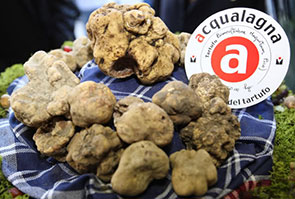
ACQUALAGNA 18 KM
Acqualagna is one of the most fragrant places of Italy and has an expensive earthy scent that arouses appetites of all kinds. Besides, it is one of the Italian capitals of the tuber world’s most wanted with the legendary white truffle, which here has one of the most important production. The National Truffle Fair is held the last week of October and on the first week of November, whereas the Regional Fair of black truffle takes place on the third Sunday of February and the Regional Summer Truffle Fair on 14 and 15 of August.
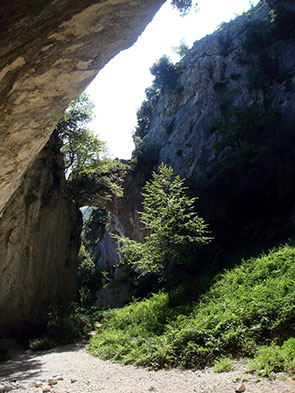
MONTE NERONE 30 KM
1525m high, Monte Nerone is without a doubt one of the “strongest” paths of the whole territory of Montefeltro and its ducal origins offer limestone valleys and peaks, forests, meadows, streams and waterfalls. There are numerous caves including that of Tassare (505m depth) wich is considered as the third most popular in the world in addition to the natural arch of Fondarca.
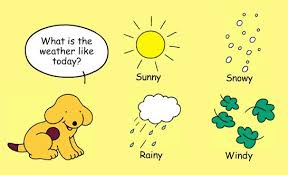
Weather Urbania http://www.ilmeteo.it/meteo/Urbania